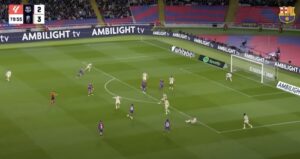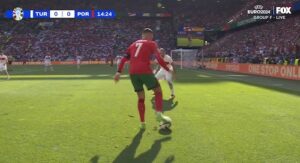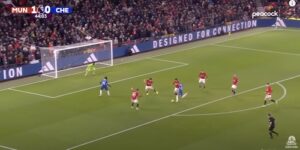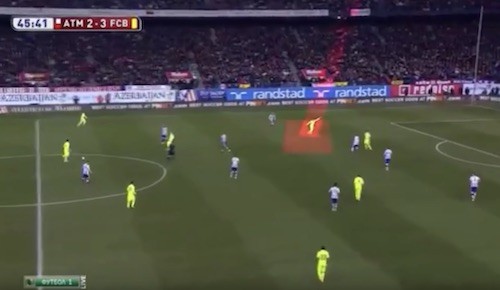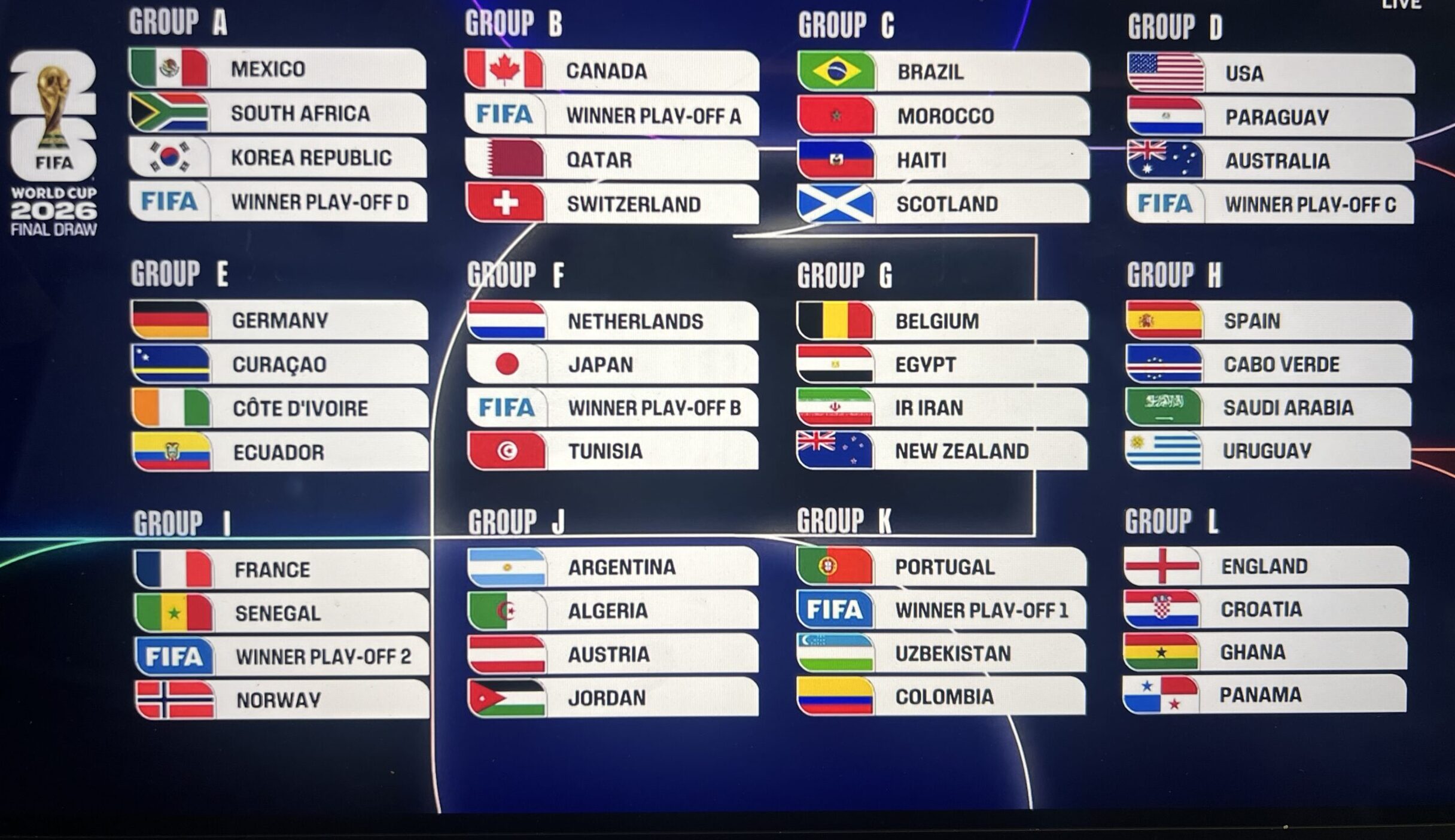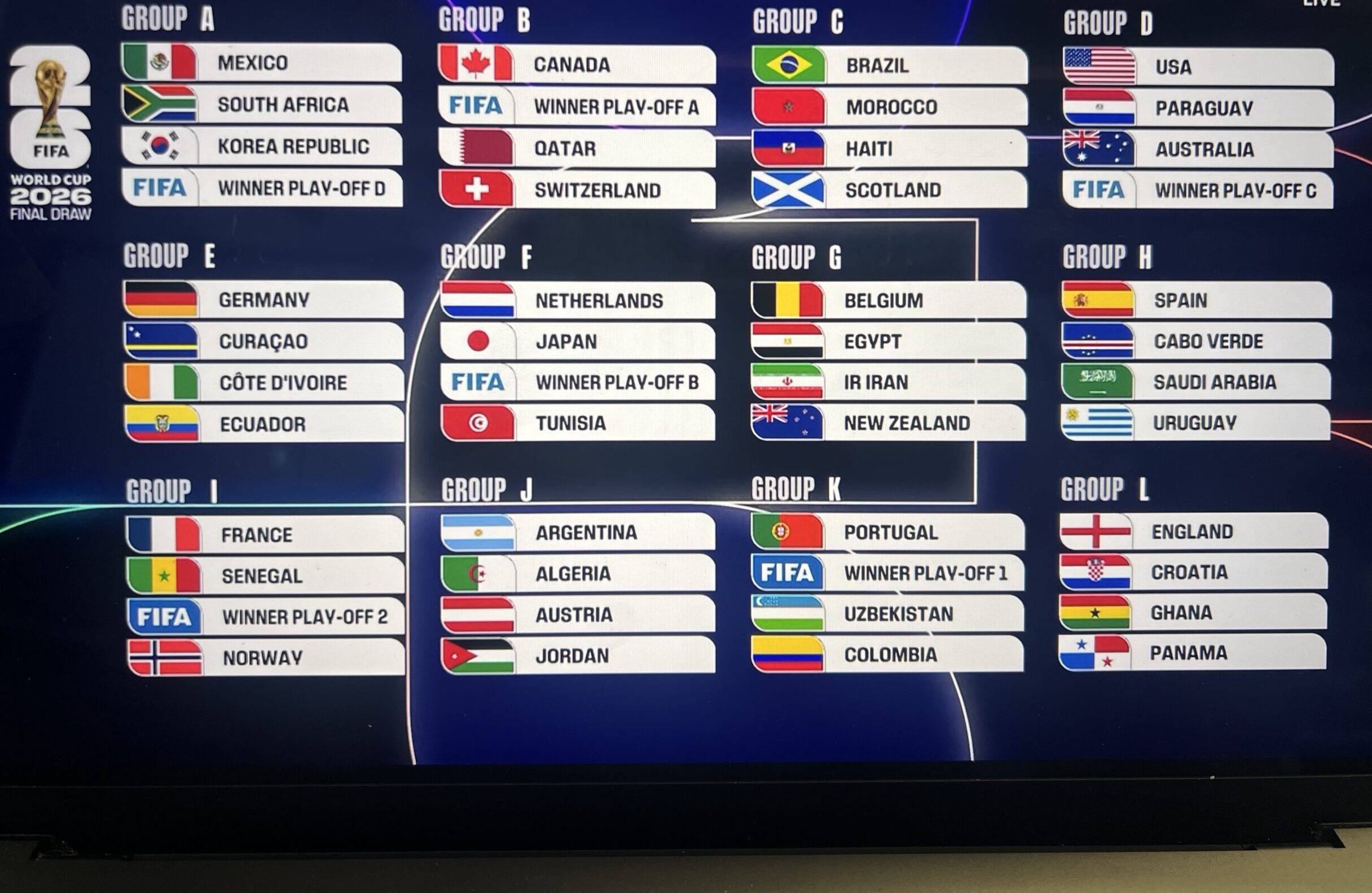Soccer set plays: How common are set plays or set pieces in soccer? Should soccer teams have plays that they run that are planned out in advance before the start of the game? What’s interesting though is if you look closely at the game of soccer set plays and patterns are everywhere. Patterns of play. If the ball is played here you move here and the pass goes here and so on. It’s an understanding. It’s a set play.
Really, these counter attack goals in the German Bundesliga are essentially set plays or passing patterns teams work on before the game. The idea of course in a counter attack is to move the ball as quickly up the field as possible, but you have to have a plan or concept beforehand in order to accomplish this – every player on the team has to know their role and positioning on the field to make this happen at speed.
Soccer set plays. The counter attack. A plan can be put in place in training in how to break out on a counter attack is the ideal set play in soccer.
Soccer is such a fluid game, no time outs or stops and starts except at kickoff and halftime, so you’d think there aren’t any set plays. Sure, there are the usually injuries that are milked to kill the soccer game when a team’s ahead or fake injuries to stop a team’s momentum, but overall, soccer is 90 minutes of none stop action. There’s no time to stop play and call out a play to run like in other sports. And that’s what makes soccer unique and great.
However, there are dead ball situations in soccer that are ideal for pure set plays. Manchester United has made a habit these days of making use of these situations, the trick corner kick, a slow roll of the ball by Giggs with the top of his foot and Cristiano nails the ball into the back of the net against Aston Villa. Free kicks and corners are easy times for set plays, there are others too. Throw-ins can be set plays.
There are really only five times when the ball is dead and a set play can be enacted:
- Kick offs – beginning of the game and halftime
- Free kicks – indirect and direct
- Corner kicks
- Throw ins – long and short
- Goal kicks
Here’s the definition of a set play or set-piece in soccer from Wikipedia. Essentially, set pieces are defined as when the clock is stopped and something is set up by the team that’s been planned or rehearsed in training. But I’d argue that set pieces are happening all the time throughout the game, from give and goes to overlaps to other patterns of play.
The term set piece or set play is used in soccer (football) to refer to a situation when the soccer ball is returned to open play following a stoppage, particularly in a forward area of the pitch. Most often, the term is used to refer to free kicks and corners, but sometimes throw-ins.
Many goals result from such positions, whether scored directly or indirectly. Thus defending set pieces is an important skill for defenders, and attacking players spend much time rehearsing them; set pieces are one area where tactics and routines can be worked out in training in advance of matches. Some players specialize in set pieces.
Let’s take Manchester United’s game against Porto and the Tevez goal, which comes close to the 2 minute mark in the video below – was this a set play?
Update: The video versus Porto was removed, so let’s look at this give and go between Rooney and Tevez. This too can be looked at as a set play – the two players know what the other is going to do beforehand. There’s an understanding that’s developed on the training pitch.
It’s not clear that this was a set play, but the long throw by Gary Neville and the flick by Rooney met by a well timed run by Tevez seem to point to some run throughs in training and some foresight. Yes, it’s like this was planned in training as a set play for Manchester United.
The long throw is in some ways frowned upon and maligned, as though it takes away from a game that’s all about the feet. Yet, when a player can chuck the ball in like a corner, I wouldn’t be surprised if you see it more and more in the world’s game. The flip through is something you rarely if ever see in the world soccer, not really necessary, especially when you have someone like Oguchi Onyewu who can throw the ball from the sideline corner kick.
Other concrete set like plays come through the course of the soccer game, though these aren’t dead ball situations but plays nonetheless – more patterns let’s say. So there really are set plays throughout the game of soccer, from over laps to wall passes to short short long passes.
There’s the spread the ball wide and have the winger whip in the cross. There’s the short short long play to get out of trouble and switch the ball to the other side. There’s the drive the ball into the head, chest or feet of the forward by a defender from the back, and have the midfielder collect the layoff and play the ball down the line to the outside midfielder. There’s the give and go or wall pass. There’s the overlap. There’s the dribble exchange. And so on.
These are all “set plays” that are ingrained in soccer players and teams throughout the years of playing the game. It’s just that these set plays take different forms throughout a game. Adjustments are made. And there is no time to call them out to run them.
Then there’s the counter attack and the quick punt by the keeper. And the long ball, which seems an act of desperation, which can surprise a team, remember when David Villa latched on to a long ball in Euro 2008?
The game of soccer is full of set plays. The beauty is these set plays are some what hidden and hard to see unless you really know the game. These set plays aren’t chalked out on a board before the game as rules to follow. Again, these set plays are ingrained in soccer players in practice and patterns. These set plays are those genius moments where it all comes together and that’s what makes the game so much fun to watch. It’s a set play with a variation that surprises the other team and results in a goal.
FC Barcelona Possession Analysis
Talk about set plays. Barcelona are masters of patterns of play. Over and over again they make similar passes and runs. Check out this FC Barcelona visual learning analysis focusing on movement triggers when in possession. The video highlights reasons why Barcelona are patient in possession and triggers they look for to penetrate the opposition with well times runs.
Read more over at defending set pieces. Coaches, learn about the Coerver Coaching method.

